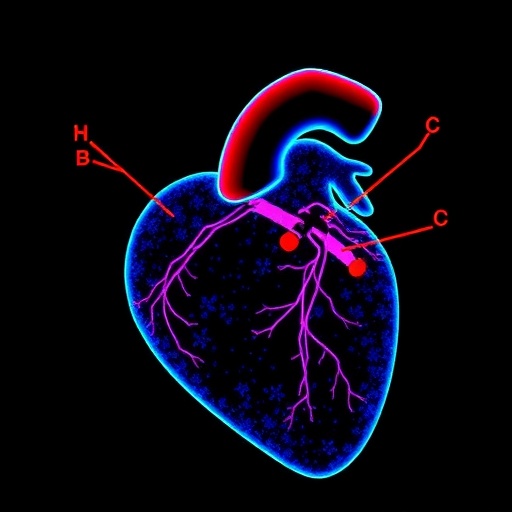New York, NY (May 24, 2017)–Columbia University dental researchers have found that frequent recreational use of cannabis–including marijuana, hashish, and hash oil–increases the risk of gum disease.
The study was published in the March issue of the Journal of Periodontology.
Periodontal (gum) disease is an inflammatory reaction to a bacterial infection below the gum line. Left untreated, gum disease can lead to receding gums and tooth loss. Longstanding periodontal disease has also been associated with a number of non-oral health issues, from preterm labor during pregnancy to heart disease.
Jaffer Shariff, DDS, MPH, a postdoctoral resident in periodontology at Columbia University School of Dental Medicine (CDM) and lead author, noticed a possible link between frequent recreational cannabis use and gum disease during his residency at a community-based dental clinic in Manhattan.
"It is well known that frequent tobacco use can increase the risk of periodontal disease, but it was surprising to see that recreational cannabis users may also be at risk," said Dr. Shariff. "The recent spate of new recreational and medical marijuana laws could spell the beginning of a growing oral public health problem."
Dr. Shariff and colleagues from CDM analyzed data from 1,938 U.S. adults who participated in the Centers for Disease Control's 2011-2012 National Health and Nutrition Examination Survey, administered in collaboration with the American Academy of Periodontology. Approximately 27 percent of the participants reported using cannabis one or more times for at least 12 months.
Periodontal exams focus on a patient's gum tissue and connection to the teeth. Among other assessments, periodontists look for plaque, inflammation, bleeding, and gum recession. The clinician uses a probe to measure the space between teeth and their surrounding gum tissue.
Healthy gums fit a tooth snugly, with no more than one to three millimeters of space, known as pocket depth, between the tooth and surrounding gum tissue. Deeper pockets usually indicate presence of periodontitis.
Among the study participants, frequent recreational cannabis users had more sites with pocket depths indicative of moderate to severe periodontal disease than less frequent users.
"Even controlling for other factors linked to gum disease, such as cigarette smoking, frequent recreational cannabis smokers are twice as likely as non-frequent users to have signs of periodontal disease," said Dr. Shariff. "While more research is needed to determine if medical marijuana has a similar impact on oral health, our study findings suggest that dental care providers should ask their patients about cannabis habits."
Commenting on the study, Dr. Terrence J. Griffin, president of the American Academy of Periodontology, said, "At a time when the legalization of recreational and medical marijuana is increasing its use in the United States, users should be made aware of the impact that any form of cannabis can have on the health of their gums."
###
The study is titled, "Relationship Between Frequent Recreational Cannabis (Marijuana and Hashish) Use and Periodontitis in Adults in the United States: National Health and Nutrition Examination Survey 2011 to 2012." The report was initially published in the October 2016 online issue of the Journal of Periodontology.
Additional authors included Kavita P. Ahluwalia and Panos N. Papapanou (Columbia University College of Dental Medicine).
The authors report no conflicts of interest.
Columbia University College of Dental Medicine, among the first university-affiliated dental schools in the United States, was founded in 1916. As part of a world-class medical center, the school trains general dentists and dental specialists in a setting that emphasizes the interconnection between oral health care and overall health for both individuals and communities. The school supports research to advance personalized, evidence-based oral health care and contribute to the professional knowledge base for future leaders in the field. In its commitment to service learning, the school provides dental care to underserved communities of Northern Manhattan and also engages in dental and oral health care capacity-building initiatives abroad. Its faculty has played a leadership role in advancing the inclusion of oral health programs in national health care policy and has developed novel programs to expand oral care locally and in developing countries. For more information, visit dental.columbia.edu.
Columbia University Medical Center provides international leadership in basic, preclinical, and clinical research; medical and health sciences education; and patient care. The medical center trains future leaders and includes the dedicated work of many physicians, scientists, public health professionals, dentists, and nurses at the College of Physicians and Surgeons, the Mailman School of Public Health, the College of Dental Medicine, the School of Nursing, the biomedical departments of the Graduate School of Arts and Sciences, and allied research centers and institutions. Columbia University Medical Center is home to the largest medical research enterprise in New York City and State and one of the largest faculty medical practices in the Northeast. The campus that Columbia University Medical Center shares with its hospital partner, NewYork-Presbyterian, is now called the Columbia University Irving Medical Center. For more information, visit cumc.columbia.edu or columbiadoctors.org.
Media Contact
Anna Spinner
[email protected]
212-305-7327
@ColumbiaMed
http://www.cumc.columbia.edu
############
Story Source: Materials provided by Scienmag




